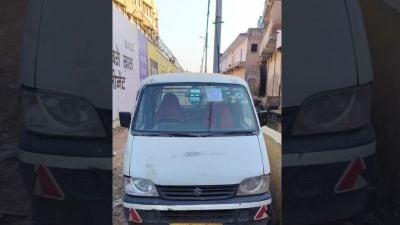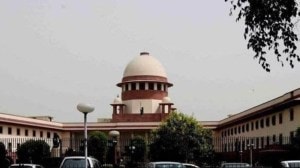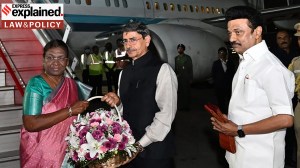Next to Capital,polio finds an epicentre
With India reporting the highest number of polio cases (672) in 2009 and Uttar Pradesh accounting for 544 of them...
With India reporting the highest number of polio cases (672) in 2009 and Uttar Pradesh accounting for 544 of them,Ghaziabads tally of 72 polio cases makes it the polio hub of the world
The changing landscape of Ghaziabad in the National Capital Region,an apparent testament to the Indian economic boom with its shimmering malls and high-rise apartment blocks,hides another grim reality. With India reporting the highest number of polio cases (672 cases) in 2009 and Uttar Pradesh accounting for 544 of them,Ghaziabads tally of 72 polio cases,in a way,makes it the polio epicentre of the world. In 2008,Ghaziabad had reported just five cases of polio and by the end of 2009 that number had shot up to 72. With the government,health officials and development agencies setting 2012 as the target for eradication of polio,UP,and Ghaziabad in particular,stand out as a challenge in meeting that deadline.
Health officials at the MNG Hospital in Ghanta Ghar,the old commercial district,believe Ghaziabads woes are caused by the rising tide of labourers migrating to the township in search of work. We have got the highest migratory population,as we are in the National Capital Region, says Dr A K Dhawan,chief medical officer at MNG Hospital. The rising construction activities also mean the presence of a large number of slums. The migrant labourers coming from Bihar and Uttar Pradesh keep moving and are hard to track down.
Omkar (34) had moved to a slum in Indirapurams Gyan Khand seven months ago. Originally a resident of Badayun in eastern UP,Omkar,a father of five,is a rickshaw puller in the morning,a lunch delivery man in the afternoon and runs a kiosk outside his house in the evening. His three-year-old son Jatin suffers from polio. It makes one sad to see him not able to walk, said Omkar.
No one had come to his house to give his son polio drops; yet,the difficulty in tracking down high-risk groups is only part of the problem. In this slum of more than a thousand inhabitants,theres not a single toilet. What is further weakening the fight against polio are UPs poor healthcare facilities the number of cases in the state have risen from 305 in 2008 to 544 in 2009.
On December 26,a UNICEF study released in Lucknow said low levels of routine immunisation were not only resulting in the resurgence of diseases like polio but also that of easily preventable ones like diphtheria and whooping cough. The study said immunisation levels in 36 districts of UP were less than 20 per cent,while in 39 districts,they were between 20 and 40 per cent; only in five districts,the immunisation levels were higher than 40 per cent. This is in sharp contrast with southern states like Tamil Nadu (92 per cent) and Karnataka (84 per cent).
Nowhere is the manifestation of this apathy more evident than in Dhaulana,the worst-hit rural block in Ghaziabad,that registered 18 cases last year.
We have camps from time to time,but there is no scheme yet for door-to-door routine immunisation, said Parveen Begum,an 18-year-old volunteer who works as a WHO agent.
Dhaulana is also home to one of the two cases afflicted with the P1 virus,a more severe form of polio as opposed to the P3 virus found in a majority of the cases,in Ghaziabad district. Four-year-old Reshma,a P1 victim,suffers from a deformed left limb,although contingency measures from agencies have been able to contain the damage. Yet,there is hope among agencies in Dhaulana as this Muslim-majority village has not seen the kind of clerical diktats issued against polio vaccination elsewhere.
Parveen Begum,who also teaches in a primary school in the village,says: Each of the three mosques regularly makes announcements exhorting villagers to vaccinate their children and cooperate with the agencies in every way.
In Moradabad,100 km from Dhaulana the epicentre of polio until Ghaziabad displaced it fears fuelled by rumours that the vaccination was part of a conspiracy to sterilise Muslim children had hit the drive against the disease. In 2008,there was trouble after Sahafat,Moradabads leading Urdu daily,published an article voicing concerns expressed by some religious clerics who alleged a conspiracy behind the concerted polio campaign. The people destroyed our camps in anger, said Ranpal Singh,a surveillance medical officer with Project Concern International,a non-profit agency that has been working in Moradabad since 1996. Moradabad recorded 71 cases in 2009.
Health officials and development agencies have now joined hands with clerics to create consensus for the fight against polio. Clerics like Imam Masoom Ali have played a progressive role. Masoom Ali believes the refusal to receive polio drops was a perverse articulation of anti-Americanism. But we made regular announcements in mosques to allay fears and anger and explained the importance of polio drops to people. A sustained campaign in the press helped a great deal,as Masoom Ali made regular appeals in local papers asking residents to cooperate with development agencies. Moradabads press has been robustly behind efforts to eradicate polio. We are ready to help in any way we can, says Zakir Ali Baig,a journalist with the Hindi daily Awam-e-Hind.
Health officials are pulling out all the stops to eradicate polio. The WHO has seven surveillance medical officers in Moradabad as compared to one in most other districts,while UNICEF has five district coordinators in the area. The introduction of a new bivalent oral polio vaccine which will attack both P1 and P3 viruses has provided cause for optimism. However,the eradication of polio in UP,with its high population density and poor sanitation,will not be an easy task. Polios defeat will be as dependent on the socio-economic climate as on a rigorous vaccination drive, says Neeraj Singh,WHOs surveillance medical officer.
Photos




- 01
- 02
- 03
- 04
- 05



























